Let’s Make the City of the Future a Just Place
Is the sheer structure and organisation of a city able to create greater equality? Innovative urban planning aims high and targets social injustice in creative ways so that slums, mass impoverishment and social exclusion will eventually be a thing of the past.
Fast population growth poses a challenge for megacities all around the world. With city growth being a social process, it seems evolving inequalities and segregation are inevitable consequences. Urban planning can, however, represent a means of direct interference in this evolution, aiming to steer development in the right direction. Cities on all continents approach the megatrend in their own manner. Some display consequences of failure while others provide examples of best practice the global community can learn from.
The global population has been growing at an unprecedented speed. Only 12 years lay between the 6th and the 7th billion humans on earth. Cities are growing even faster due to the combination of urbanisation and demographics. Our world’s future is clearly an urban one!
In this context, however, challenges for governments arise due to the need for sufficient and adequate urban infrastructure, which has to be provided just as quickly in order to ensure safe and humane living conditions. This is a giant and demanding task and can only be successfully done via thorough urban planning. Big internationally operating NGOs like the World Bank or UN Habitat, as well as small local operations and civic organisations are thus engaged in the field in addition to governments. Their common effort has become the backbone of the pursuit of healthy city growth.
The downside of urban growth – slum dwellers being caught in the poverty trap
The most urgent problem in the context of increasing urbanisation is the persistent issue of informal settlements. Slums are mostly the first station for poor new-comers from rural regions when arriving in cities. The migrants try to make their living in these low-income neighbourhoods until they are able move to more established parts of the cities with their families. Many families, tough, are not able to make this leap, because of a lack of opportunities and harsh circumstances. This means, a majority of slum dwellers are trapped.
The most troubling issue is the appalling condition of these residential districts, which is the result of failed and corrupted policies. UN Habitat defines slums accordingly:
“A contiguous settlement that lacks one or more of the following five conditions: access to clean water, access to improved sanitation, sufficient living area that is not overcrowded, durable housing and secure tenure” [1]
Aerial view slum
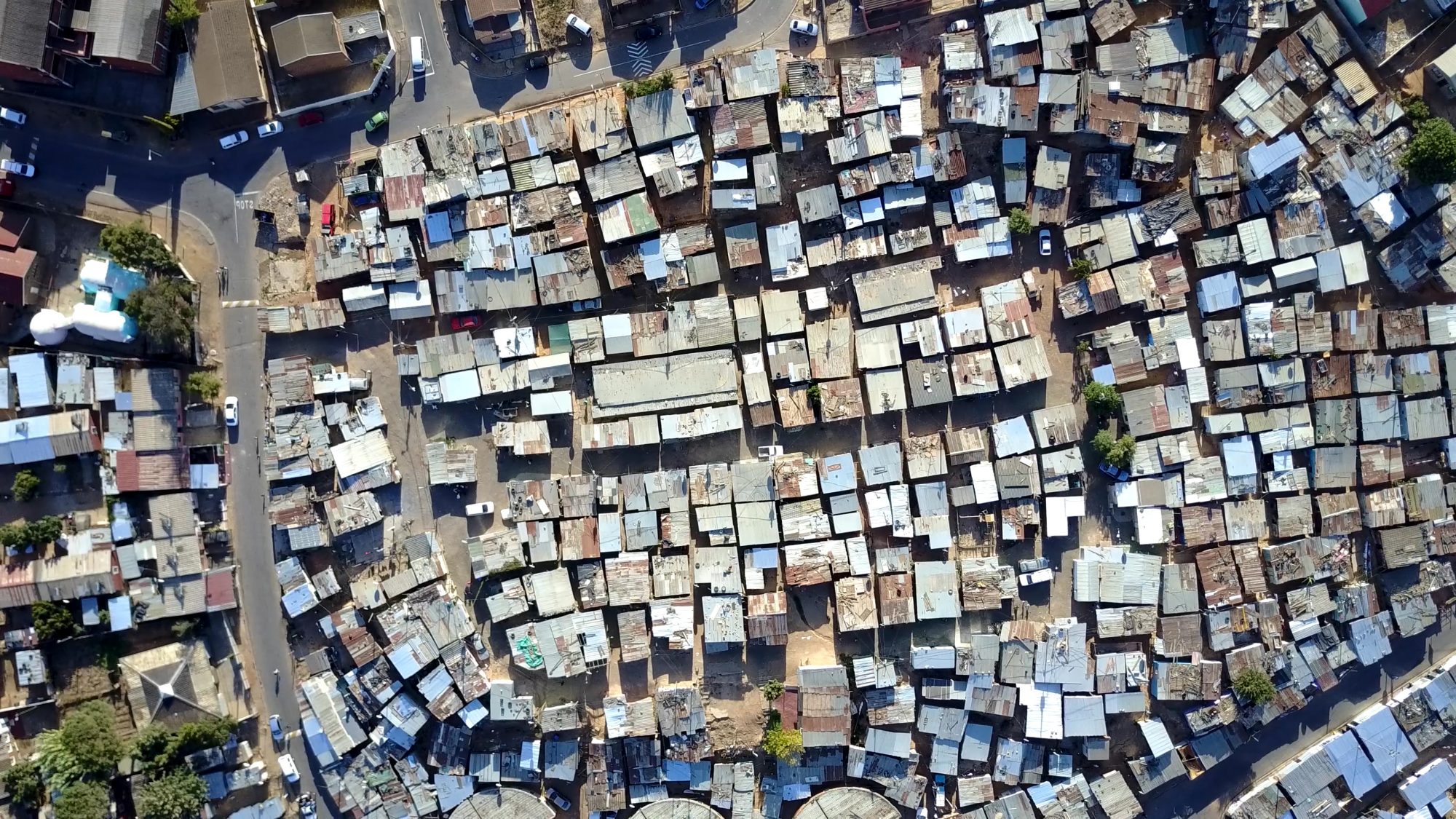
People inhabiting these areas are living below minimum standards. How come they have no opportunity to escape or upgrade? The main issue is their multidimensional exclusion and the widening gap between urban haves and have-nots. We witness the spread of gated communities all around the world, reaching extreme scenarios of perversion like those in Mumbai, where the high-quality water supply is pumped through an underground system, flowing beneath slum regions where people have hardly any access to running water at all.
Some gated communities are even linked via private highways, so that a consistent order of segregation and inequality is established which makes it nearly impossible to escape the vicious circle of generational poverty.
People with limited access to water
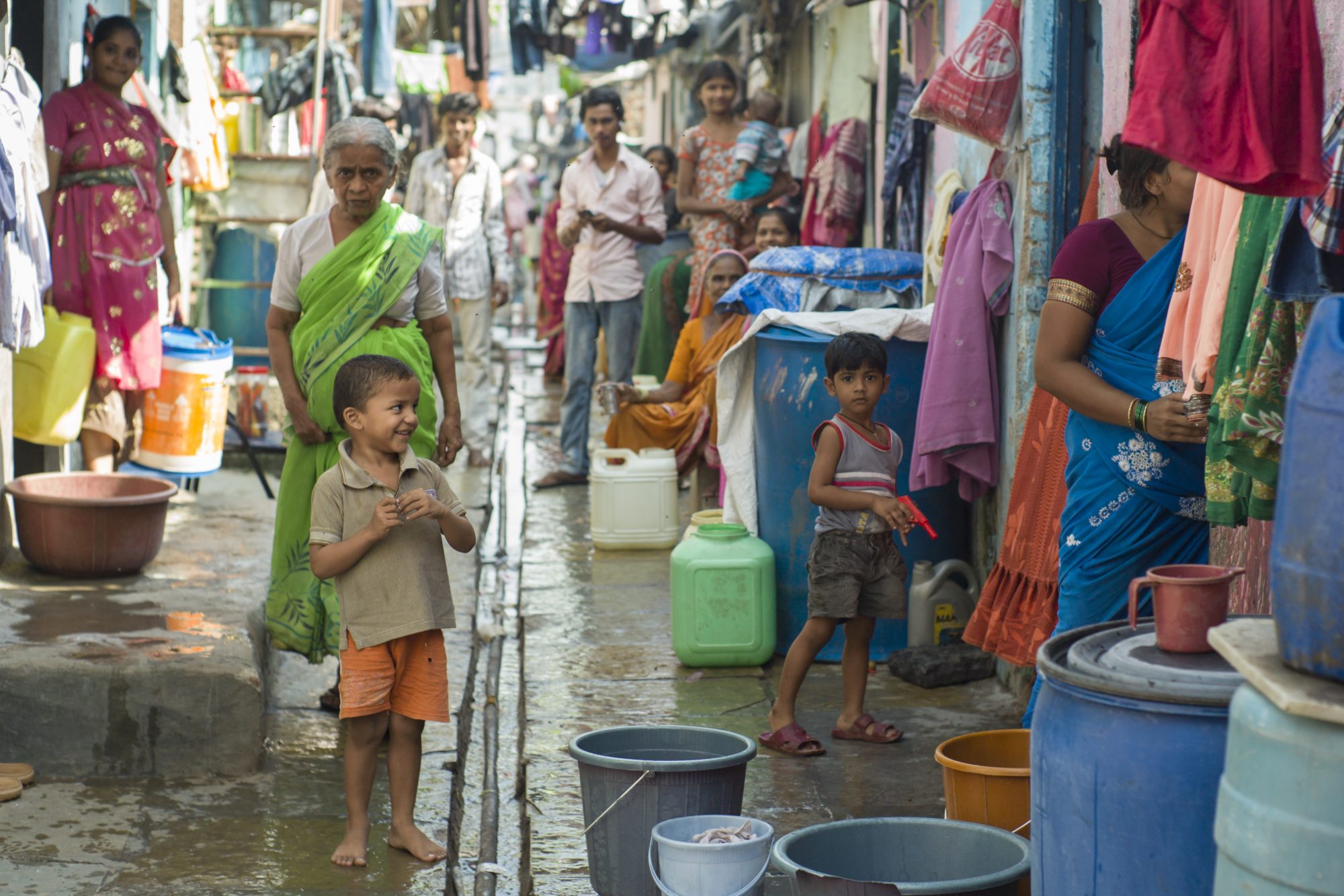
It is, however, a big misconception to think of slums as the source of all harm. These informal settlements are a vital resource for the cities and their economic power. They provide the vast work force that is engaged in diverse economic sectors and keeps the cities running. The existence of arrival cities is a general necessity for expanding urban economies. Demolishing these areas is thus not the right response, it is much more sensible to upgrade the living areas, provide them with proper transport, education, health and sanitation infrastructure, as well as civil rights and chances of citizen participation.
When resettling or restructuring slum districts, top-down approaches are necessary and reasonable as they are able to act according to bigger plans, but they can only turn out beneficially if locals are included in the process and asked for their opinion and needs. Examples from all around the world can be consulted when drafting future strategies: While some depict scenarios of political ignorance and failure, others set benchmarks for innovation and apply stunning new ideas.
The saddening picture of stagnation
Whereas slums are sometimes associated with third world countries only, this is by no means true. Ghettoization is a ubiquitous phenomenon with one of the most notorious neighbourhoods to be found right in the heart of Europe – in Paris. Despite decades of grievances and repeated promises for reform and policies, nothing has changed in the banlieues: Crime rates are as high as ever, the population is poor and stigmatised, and public services are lacking in every field. The people feel abandoned by the state, they are deprived of all hope, because no investment is taken into the future of their district and their children.
Speaking of this situation that some call a quasi-apartheid, one cannot help but also mention Johannesburg. Its historic legacy still puts enormous strain on the city and its inhabitants, as run-down townships, that were built during apartheid, are no thing of the past. There is no more official policy of forcing the black population to live in these underdeveloped settlements, that are usually very far off the economic city centres. Nevertheless, nothing much has changed in the decades following 1994 in terms of living conditions and de-facto-segregation.
Inside township house
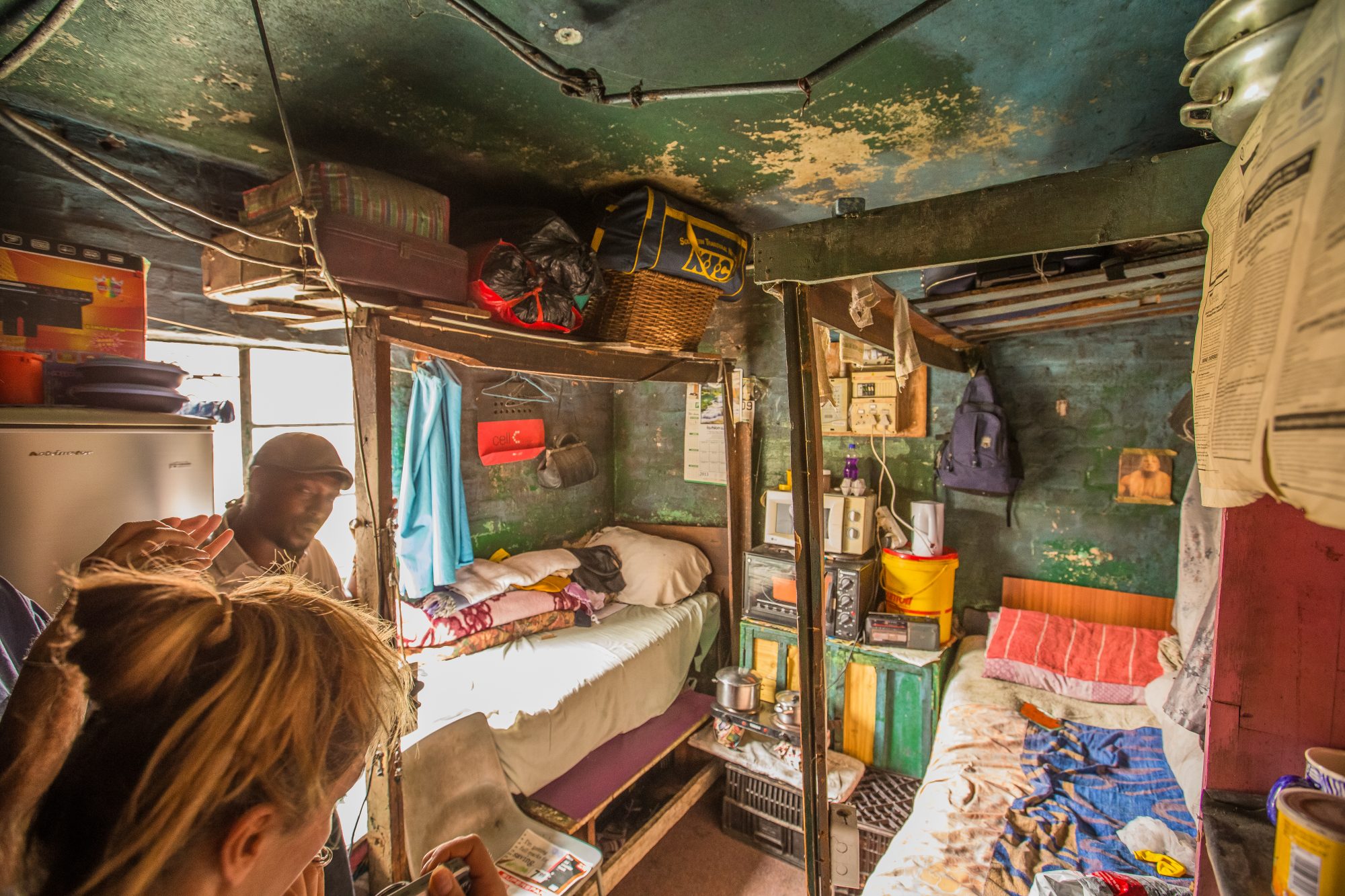
A similarly stagnant picture is to be found in Asian megacities when it comes to handling the great inflow of migrant workers from rural areas. In Beijing, for example, a sort of second class society living underground has developed: People live in overcrowded basements, storage facilities and even sewers, with not ventilation, no light, poor sanitation and inadequate access to safe water.
A legal system of being awarded a certain citizen status according to birthplace, the so-called hukou system, is only one reason that complicates the proper and safe integration of incoming workers into the urban society. Additionally, there is only little political agency and a lack of acceptance by earlier residents. For effectively tackling the problem, thus, a whole set of reform is necessary, including establishment of sufficient affordable housing, legal equality and the creation of a fair and welcoming public discourse.
On the other side of the world, in Rio de Janeiro, the Olympic Games, that were held there in 2016, promised to bring a big economic boost for the city as a whole including the poor and crime-ridden favelas. However, the term Olympic Games of Exclusion has been coined during that time, which is very telling. Indeed, implemented transport initiatives favoured some regions, but aggravated the situation for others even more.
Some of the poorest inhabitants were relocated in order to make space for big real estate interests and business opportunities. All that was accompanied by violent and illegal actions with corruption being the primary means of decision making. So, instead of having taken the chance for growth and progress via a reasonable inclusion of the favelas into the Olympic plan, the powerful and rich were the only ones to benefit in the end.
View of Rocinha favella
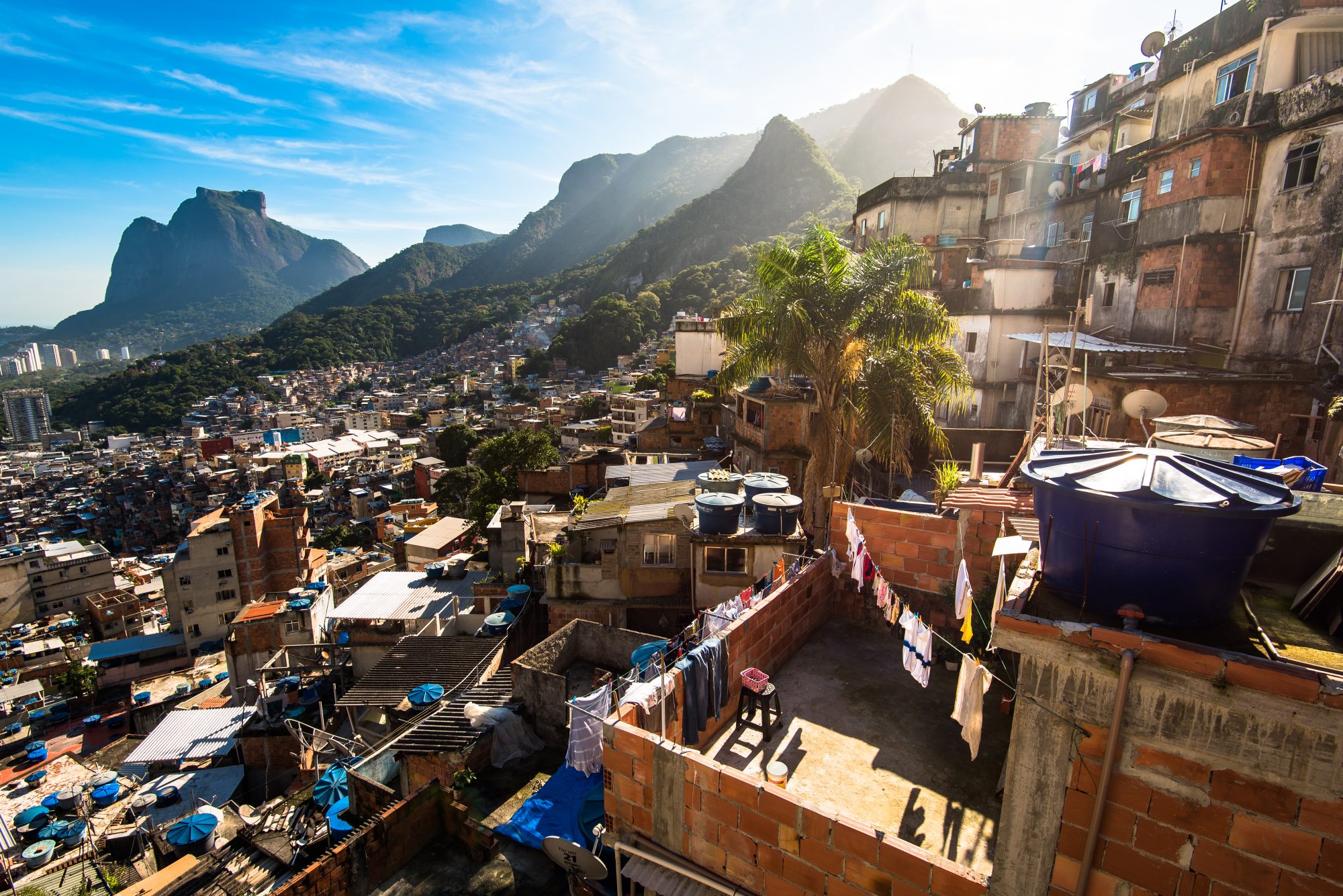
Initiatives creating hope
Whereas the examples of mishandled situations above inspire little hope for a better future, we must not shy away from the matter altogether, because there are also cases that draw a quite different picture:
Nairobi is one of the fastest growing capitals on the African continent, it is vast, dynamic but still underdeveloped in many respects, which the government is not always capable of coping with adequately. As a consequence, a joint initiative of the University of Nairobi, the MIT, and other international institutions decided to have a crack at the matter of public transport in order to enhance interconnectedness and safety: A smartphone app was designed for students to track the informal and complex matatu system. [2] Matatus are privately organised busses and minivans covering 130 different routes and transporting 3,5 million people daily.
However, the system lacked exact information: It was hard to find out about stops, routes and changes, as these could vary from one minute to the next and because the only source for getting this information was the passing from person to person. With the app, though, open-source data could be created, that was first put into a map resembling metro plans of developed metropoles, and eventually got accessible via diverse other traffic apps including Google maps, where one can now choose the matatus as a transit option. The resulting enhanced interconnection of the city represents an important opportunity for the residents, as class and district segregation are diminished.
Also, women report to feel safer and more empowered, because they can avoid accidentally riding into shady areas much easier. This endeavour is clearly an example for best practice and can work for many other developing cities to upgrade informal transport systems and thus facilitate life for urban dwellers of all strata
Close-up view of matatu
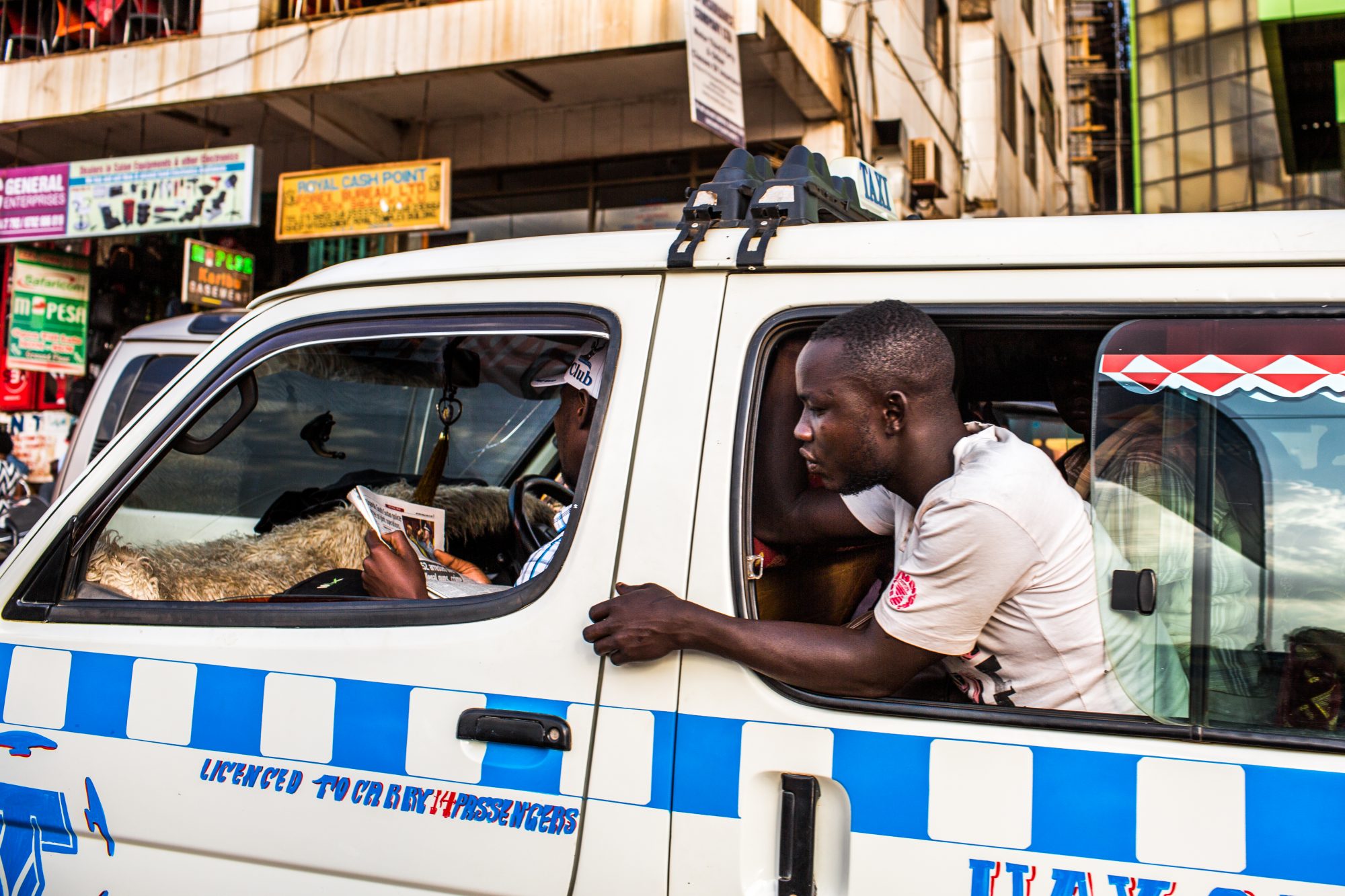
An exemplary urban policy in Latin America is to be found in the Columbian city of Medellin. [3] The central objectives are to connect remote neighbourhoods, create open public spaces and construct public buildings in order to demonstrate state presence and care. All this shall improve living conditions and opportunities for the least advantaged residents. The city got international attention due to its creative approach to traffic organisation: The backbone to the system is the classic metro, but regarding the city’s hillside location other means were employed as well. In 2004, the first line of cable cars was installed and others followed due to its great success. In 2012 an extra-long escalator was set up along the steep road leading to the most notorious district, the Comuna 13, that was hard to reach before. Investigations show only little improvements when it comes to employment rates, because easy access to economic centres does not automatically equal the availability of more jobs.
There are, however, other enormously beneficial effects resulting from the new escalators: First of all, the increased mobility of the elderly and disabled allows them to reach doctors, community activities and stores on their own again. Second, the region surrounding the stairs has become a public hub on weekends and evenings, where the community meets up placidly. The increased open spaces that were created have additionally inhibited crime and gang presence. Finally, people are feeling more encouraged to seek the augmented offer of public services and look more hopefully into the future.
Medellin cable subway
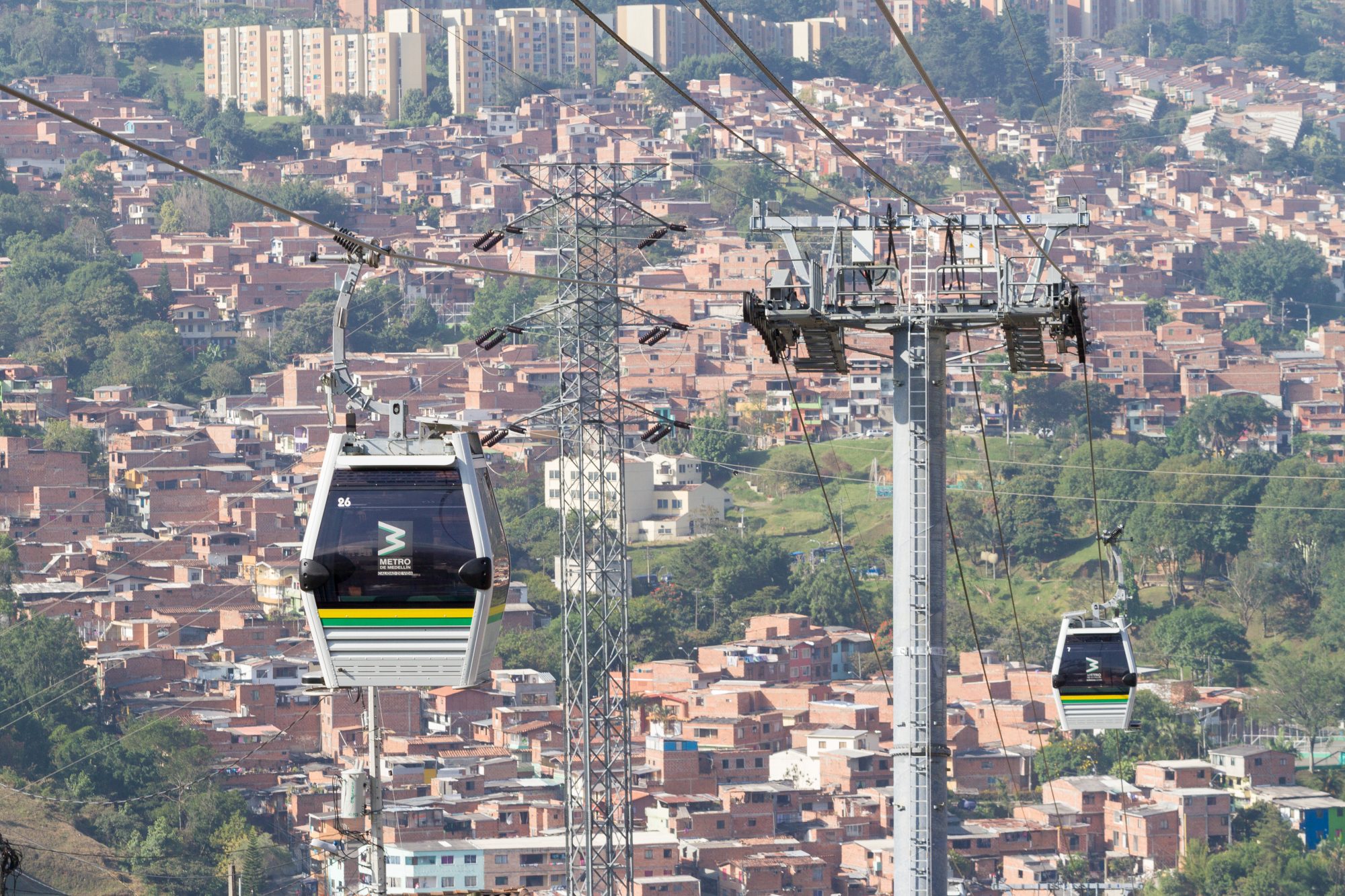
The problem of slums and segregation is obviously still a big topic. Cities all around the globe struggle with it and humanitarian organisations frenetically search for solutions. As we have seen, some cities demonstrate that there is nevertheless hope. If we tackle the issue in a committed and comprehensive way. Innovations come especially from developing countries where high demographic pressure pairs with limited financial resources.
This combination spurs creativity and flexibility, from which the developed world can learn. International NGOs, research institutions and governments need to exchange their ideas and work together on implementing useful urban planning concepts in order to make slums and exclusion a thing of the past.
References
[1] Moreno, E. et al. UN Habitat. (2016). Urbanization and development: Emerging futures. World cities report 2016. Nairobi. [online] Available at: https://unhabitat.org/wp-content/uploads/2014/03/WCR-%20Full-Report-2016.pdf.
[2] Digital matatus (2015). [online] Available at: http://www.digitalmatatus.com/intro_lite.html.
[3] Streetfilms (2012). Medellin: Colombia’s Sustainable Transport Capital. Vimeo [Online]. Available at: https://vimeo.com/39704761.
Keywords
urban planning, social justice, equality, exclusion, segregation, ghettoization, population growth, megacity, NGO, urbanisation, informal settlements, slums, migration, gated community, water supply, education, sanitation, infrastructure, transport, housing, real estate, mobility, crime

